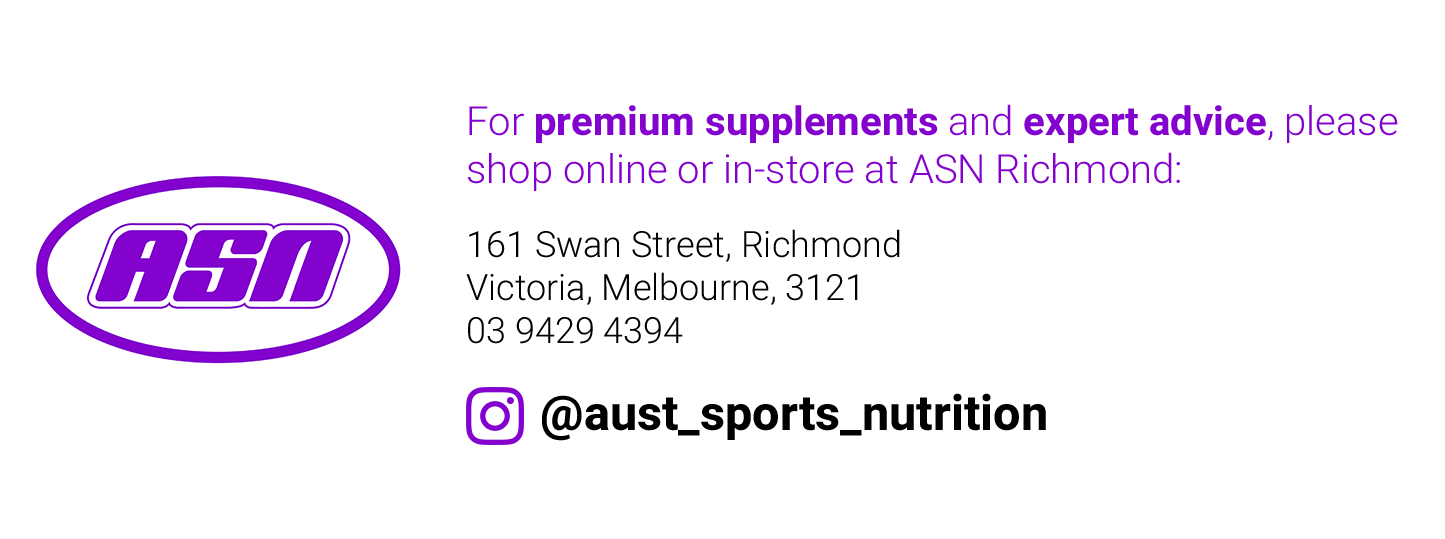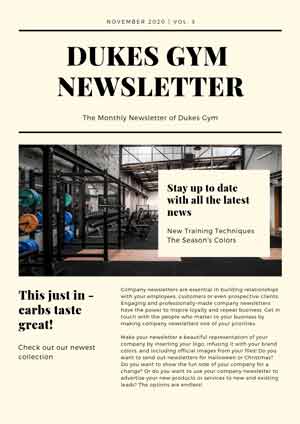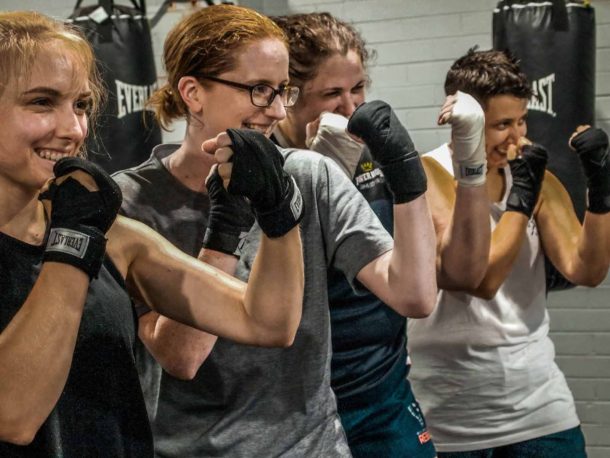5 Stress Management Strategies for Improved Fat Loss
There’s no denying how prevalent stress is in today’s society. In fact, according to the World Health Organisation, stress has been classified as the health epidemic of the 21st century. Whether it’s work-related stress, financial struggles, relationship troubles, or even physical stress placed on our body during an intense workout, it’s no secret that stress can present itself in many different forms!
Yet, contrary to popular belief, stress is not entirely bad. Stress is technically our most important survival mechanism… after all, it’s what helped keep our hunter-gatherer ancestors alive thousands of years ago. Likewise, in today’s day and age, stress is also extremely beneficial for helping us meet those work deadlines, train harder and lift heavier, and check the road before crossing for any potential threats. So, what’s the downside? In today’s society, most of us are struggling to find the ‘off button’ for stress, which is having a detrimental impact on our physical and mental health…and in many cases, our ability to lose weight!
First things first, how on earth does stress impact weight? During periods of heightened tension, the stress hormone, cortisol, rises. As a result of this, increased cortisol may also cause higher insulin levels and drop blood sugar, causing you to crave sugary and fatty foods. The result? Well, when we’re stressed, we’ll often eat the wrong types of food in excess!
With that in mind, here are our top five tips for stress management:
Tip 1: Exercise
Exercise is one of the most effective ways to combat stress, while simultaneously working on your physical health. As ironic as it might sound, putting physical stress on your body, by way of exercise, can relieve mental stress.
Did you know that people who exercise regularly are less likely to experience anxiety, as opposed to those who don’t exercise? And here’s why:
- Sleep – Exercising regularly can help to improve the quality of your sleep, due to the way it physically exhausts your body. As stress and anxiety are known to negatively impact sleep quality, this can help to alleviate the symptoms.
- Endorphins – Did you know that exercise helps to release endorphins, which are chemicals that improve your mood and act as natural painkillers? Additionally, exercise is also suggested to lower the body’s stress hormones over a prolonged period, including cortisol.
- Confidence – Who doesn’t feel better after breaking a sweat? When you exercise regularly, you’re likely to feel more confident and comfortable in your skin, which ultimately enhances mental wellbeing and reduces stress.
Whether you’re new to exercise or a gym veteran, the best way to find a sustainable and enjoyable exercise routine is to base it around something you love. Love to run? Start your day with a morning jog. Love feeling refreshed? Try hitting the pool for a few laps. Not much into traditional sports? Why not join your local yoga or pilates class. Love strength training? Head to Dukes Gym!
Tip 2: Get your sleep right
When you’re experiencing stress, you’re more likely to lay awake at night restless and unable to get a good night’s sleep. However, the lack of sleep also causes stress, which means it’s a never-ending cycle. The cherry on top? When we lack sleep, we crave a quick source of energy, such as sugary treats, which often leads us further away from our health and fitness goals. Not to mention, a lack of sleep may also interfere with key appetite hormones, ghrelin and leptin.
So, how can you improve your stress by improving your sleep cycle?
- Two to four hours before bed – Avoid any intense exercise that will make you alert and buzzing. Also, avoid large meals that will keep you up at night while your body works hard to digest everything.
- One hour before bed – Reduce the amount of artificial light surrounding you by dimming your lights or putting a lamp on. Also, switch your screens to night mode. This will help to increase melatonin, which helps to get you into a sleepy state.
- 30 minutes before bed – Switch off all electronic devices and screens. If you need your phone alarm for the morning, simply switch your phone to aeroplane mode to minimise any distractions that may disrupt your sleep!
Tip 3: Take time out for yourself
Do you often get caught up in the hustle and bustle of everyday life and forget to take time out for yourself? Whether it’s the mental stresses associated with work deadlines and pressure, the physical stress of exercise, or the mental and physical stress of raising little ones, there are many reasons why we just sometimes don’t find the time to put ourselves first. However, the downside is, without our ‘me time’, our happiness, motivation, and potential for success greatly diminish.
When you subject yourself to extreme pressure and stress day-after-day, without taking time out to recuperate, you are not only preventing yourself from performing at your highest level, you’re also exposing yourself to a greater risk of illness and disease. Truth be told – your body will not perform or look the way we want it to if you’re constantly subjecting yourself to physical and mental stress. Not long after the mental symptoms kick in, the physical symptoms will start to show!
Try incorporating the following ‘me time’ tips into your weekly schedule:
- Recovery time – Dedicate one day a week or a month to ‘recovery time’. This should be time spent relaxing and unwinding. For instance – Get a massage, go to the movies alone, read a book, listen to a podcast… whatever it is you love doing to unwind, make it a staple in your routine!
- Learn new skills – We spend so much time bettering our skill set to progress in our careers, but how much time do we really spend improving our skills to better ourselves as people? For most of us, the answer will be: never. So, we urge you to find a skill you’d like to learn – whether it be photography, drawing, running, a language – and commit to it for six months. Never underestimate how important learning is and how much it can influence our mental health!
- Change up your routine – It’s easy to become stagnant in your routine and your attitude when you do the same things at the same time every day. Whether it’s your workouts or your downtime, try switching things up to keep your routine fresh and exciting.
Tip 4: Run your own race
There’s no denying that social media is an extremely effective and beneficial tool for helping us to connect with new and old friends, discover new places to eat, and unwind while laughing at the never-ending stream of memes. However, in today’s society, the downside of social media is starting to outweigh the positives: It’s starting to replace one-on-one human interaction. I mean, let’s be real – receiving a like on Facebook or Instagram just isn’t the same as catching up with friends in real life. The enjoyment is fleeting!
Believe it or not, stress can present itself in several ways, and it’s not always just work, finance or relationship-related. More often than not, it stems from confidence and self-worth. As such, comparing your progress to what others post on social media can be very damaging. With the advent of Photoshop, FaceTune and Instagram filters, social media gives us an unrealistic expectation of how our lives should be, or, how underwhelming our gym progress might appear to be in comparison to your social media buddies.
However, in actual fact – seeing the progress of others should inspire you, not demotivate or irritate you. If social media is having a negative effect on you, switch off and focus on your own progress…after all, everyone is running their own race and it’s probably time you did the same. Better still, those 30 minutes you spent scrolling aimlessly through your feed could’ve been much better spent working towards your goals, meditating, reading or just simply unwinding.
Tip 5: Incorporate supplements
Do you feel like you’ve tried just about everything and are still unable to reduce the stress from your life? Perhaps it’s time to call on the help of a friend. Yep, we’re talking about supplementation!
If you’re looking for the right solution to enhance energy, improve wellness and reduce stress, it’s important to find one that won’t leave you feeling scattered and run down once it wears off. So, what do we recommend? * drum roll * Project U Vitality!
Just like all things in life, maintaining optimal vitality requires ongoing maintenance of your internal health. Thanks to Project U Vitality, ensuring your body has all the goodness required to boost your brain functionality and overall health, just got that much easier.
So, what can you expect from this formula?
Simply put, Vitality is designed to stimulate brain function, support gut health, boost energy, enhance mood and lower cortisol!
Project U Vitality contains Apple Cider Vinegar to aid digestion, support gut health and act as a natural antibacterial and antioxidant. As well as Lemon Balm to also support digestive health and to help increase GABA in the body, which may have a calming effect strong enough to help lower cortisol levels and reduce anxiety. Additionally, Moringa Leaf Powder is rich in antioxidant properties and natural anti-inflammatory benefits, and Reishi Mushrooms boast powerful immune-boosting and mood-enhancing properties.
This impressive formula doesn’t stop there. To supercharge Vitality, a combination of powerful nootropic and brain-boosting ingredients have been added. Huperzine A has been added to help boost memory and neuro function, Cognizin Citicoline to reduce age-related memory impairment and boost attention, and Tyrosine to improve alertness and mental performance. Lastly, the key ingredient, Lion’s Mane, has been added to help relieve symptoms of anxiety, boost immune health, reduce inflammation and oxidative stress, and to help speed up recovery from nervous system damage.











